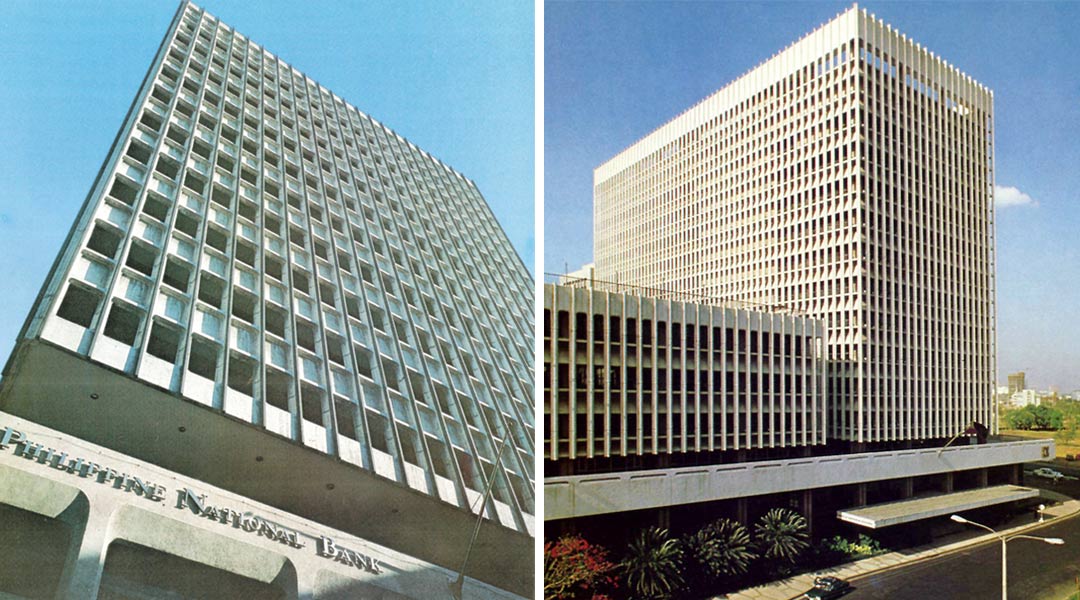
David Consunji on working with Arguelles, Nakpil, Zaragoza and more
One of the leading construction companies in the country bears the name of David Consunji. Beginning with the 1960s, many of the country’s most prominent structures were designed by a roster of the best architecture offices, and built by one company, David M. Consunji, Inc., or DMCI. Its founder is himself an icon.
BluPrint, accompanied by Carla Arguelles Ramsey, daughter of Carlos Arguelles, the architect of the Development Bank of the Philippines (DBP) and the old Philippine National Bank (PNB) headquarters on Escolta, and Douglas Ramsey, architect and son-in-law of Arguelles, sat down with Mr. Consunji.
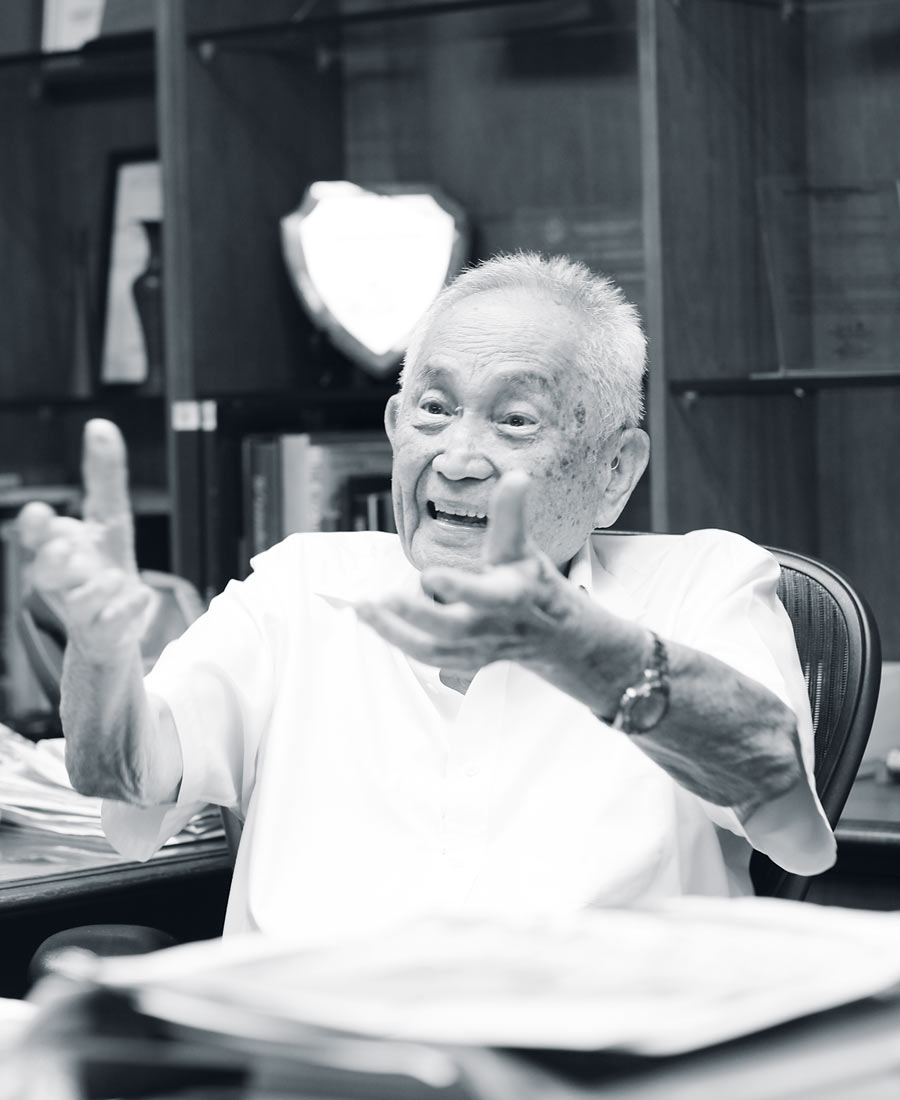
Consunji on architects he dealt with
Don Juan Arellano would be the most humble of them all. Yung matanda, wala akong masasabi sa bait niya. (The old man was extremely kind.) Once in a while, I would drop by the Bureau of Public Works to see what they were working on. At the time, it was still the provincial capitols, those with the Greek columns and Neo-classic design.
Cesar Concio was a civil engineer first, then took up architecture, and then became dean of the College of Architecture [of Mapua]. I nearly did the Insular Life for him. I think that was his last job with the Ayalas. You know why? I’ll tell you why. His office calls for a 2:00 meeting then he arrives at 4:00.
Pablo Antonio was looking at the house of Dr. Januario Estrada, the number one surgeon in the country. It was taking shape when he called me and said, “This is Architect Antonio. Can you see me for an interview?” When I came to see him, he began talking about all the [other] architects, and the new architects. One could see they had conflicts, [but] not conflicts of lines or style—rather, very personal matters. I never worked with Pablo Antonio. [Laughs]
When you talk to contractors working for him, they’d say, “Hindi ho nagkakamali yan, yung kamay niya ang dumudulas!” (That man does not commit mistakes. It’s his hand that slips!) Antonio had a very critical eye. But then again, most architects then did not treat their contractors very well. They looked at them with disdain.
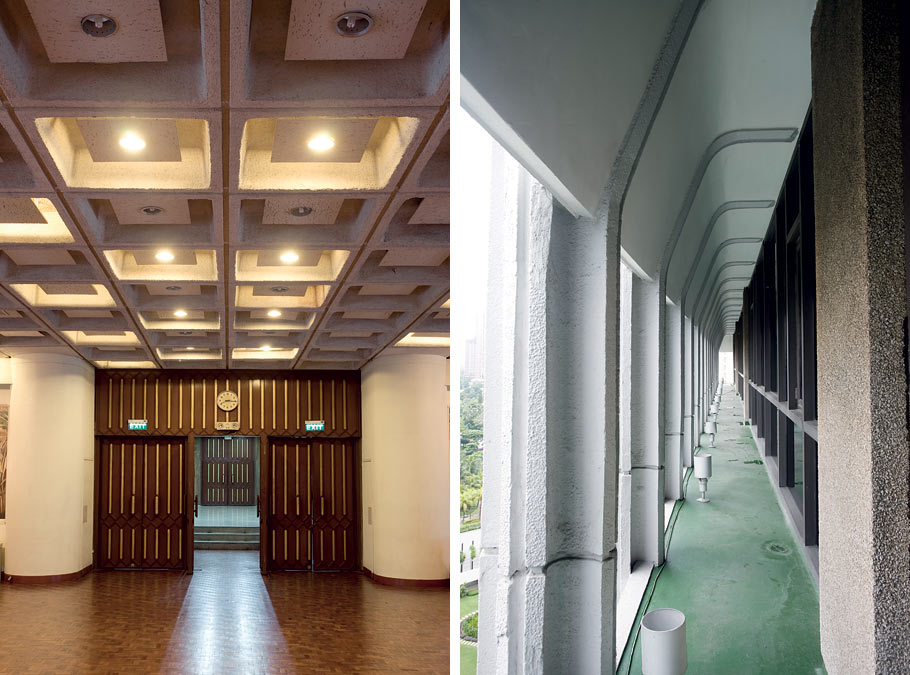
Consunji on Nakpil and Rizal Theater
I was doing some theaters for him because he was the only guy that theater owners went to (except for Luis Araneta). Nakpil was the architect of the Rufino Brothers. Then of course, all of these buildings were always done with a little ‘mystery.’ “David,” Nakpil says, “my plan is my plan. Don’t you ever change it.” You have to follow him to the letter.
Now it happened that in his plan, there was a hanging footstep at the Rizal Theater. When you went up to the balcony, it would shake. He made a big mistake. It was shaking like hell. Then here comes Fernando Zobel with vertigo—this is the head of construction of Ayala. I was able to hang on to the handrail, and I saved him [Zobel] from breaking his leg. I was able to hold him. He was quite heavy. He was thanking me like hell! He said, “Please don’t ever tell Mr. Nakpil. Just do something about it.” “Don’t worry,” I told him, “I’m going to do something about it.” I stopped the lateral. But Nakpil, I never told him. He was so proud of those stairs. So I kept quiet about it.
[Nakpil] was always aloof. Finally, in 1971, I was Secretary of Public Works (during the Marcos years) and he needed work from the government, so he had to come to me. I did not make it difficult for him. He was an old man already. But nothing happened. We had to get a young guy who was one of the favorites at that time, Felipe Mendoza.
Consunji on Locsin and the UP chapel
Locsin was a good friend of Fernando Zobel. I did not know Locsin at the time—it was Fernando who introduced me to him. Fernando was putting up a house, and he got me to do the house. Then I met Locsin. He was graduating from architecture [then]. At the time, he told Father Delaney his idea of putting up a circular church, and Father Delaney bought the idea. [Completed in] 1955, it was the Chapel of the Holy Sacrifice in UP. We both were blessed with good fortune after finishing the UP chapel. I don’t know why, but both of us became lucky after that. [Laughs]
Father Delaney was telling us that historically, it was the synagogue that used the round form. Also, UP didn’t have money so he chose to have the circle—the biggest area you could confine with the least material. Now I wanted to improve the mixing of concrete. One mixes it very strong, brings the concrete upstairs and then delivers the concrete by chute. You cannot do it by chute if it is very thick—you need to water it down. But diluting concrete diminishes the strength of concrete.
I told Alfredo Juinio [then UP Engineering professor serving as the UP Chapel’s structural engineer, who later became dean of the College of Engineering] at that time, I would like to find a way to bring my concrete, as it is mixed, directly into the form. In 1954, I went to Australia to see how mixing was being done. You get the concrete, mix it well, design platforms to bring the concrete to where you want it to go—not by chute so that you water and water and water it, and the 3000 to 4000 pounds of concrete become 2000 pounds by the time it reaches the end.
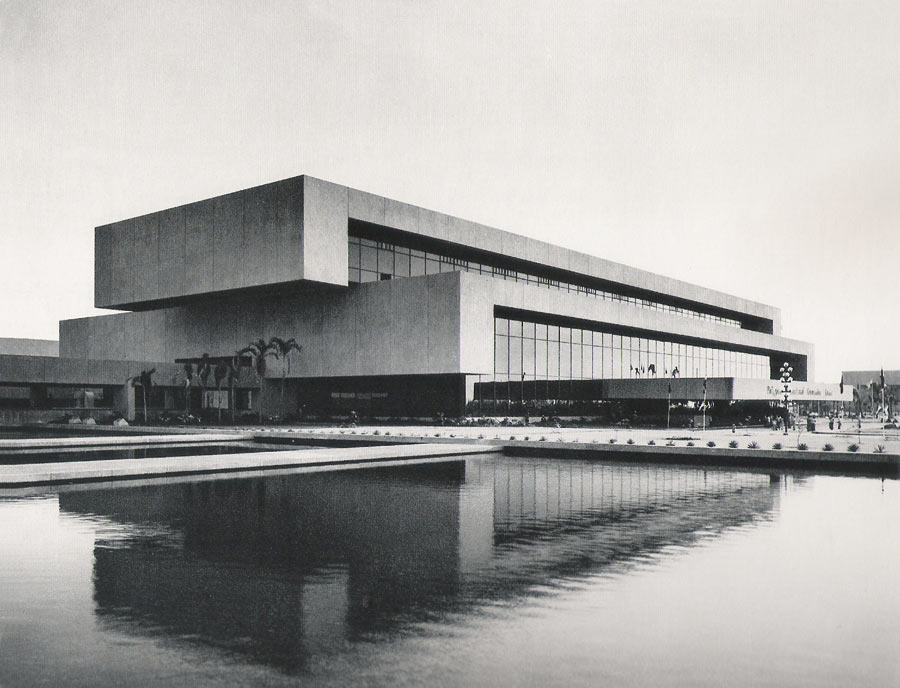
This is crazy—let’s stop this way of doing things, I said. As a teacher, he [Juinio] could not do much, but I was the practitioner, and so now, here was the UP Chapel. You cannot build the structure if you don’t have 3000 to 4000 pounds of concrete. The base is going to be about eight inches thick that tapers to three inches [at the top of the dome] because it has to be light. The concrete that you put into it has to be light. Otherwise, you know, everything could burst.
Okay, so three inches. I needed a certain permeability of concrete to be able to preserve the steel. I’ll try, I said. I think I found a way. I’ll do it using wheelbarrows. I have to put planks, make sure planks can go there, deliver it, then go home. We estimated that we could pour the concrete at 5:00 in the morning, and finish at 11:00 in the evening.
That day, a Sunday, there was a storm. I was still living in Pandacan in that old house of ours. And I thought of dressing up earlier to tell Father Delaney that we couldn’t start pouring because the storm was here. So I went there early; at 4:00, I was there already and he was preparing for mass.
I said, “Father, I don’t like this storm.” You know what he said? “David, go there and pour the concrete, and I’ll do the praying.” “Well,” I said, “Father, I leave everything to you, because the downpour will be very disastrous!” To my big surprise, not a drop of water [came] until 11 o’clock!
My people were there, at the top, and all around were the people with their umbrellas. It was raining all over [but the dome was dry]. It was a miracle! [In addition to being the first circular church in the country, the UP Chapel was also the first structure to use a lightweight, thin-shell concrete dome.]
Consunji on Andres Luna de San Pedro
I saw what Andres Luna did for the Fernandez people, Compania Maritima [building]. His son, Andre, was my classmate. I used to see Carling [Arguelles] and Andres, who was a very nice guy. May isang bahay na ginawa yan sa Sariaya (He did a house in Sariaya). The Enriquez [house] was a wonderful house! He did two houses, including the Fule house in San Pablo…everybody knows that house. When he came out with the Crystal Arcade, Manila got the biggest surprise of its life. It was ahead of its time. As if you were in Europe. Very tastefully done.
Consunji on importation
I think that after the UP Chapel, architects were not as tough on me. [Laughs] I got shortlisted all the time. That was the time when the peso and dollar were at par, then became four, then six [pesos to one dollar]. In any building in the Philippines, your import was at least 25% of the cost at the time. Everything was imported. We could not change that because every country passes through that stage. You just had to tighten your belt, work faster, and work more.
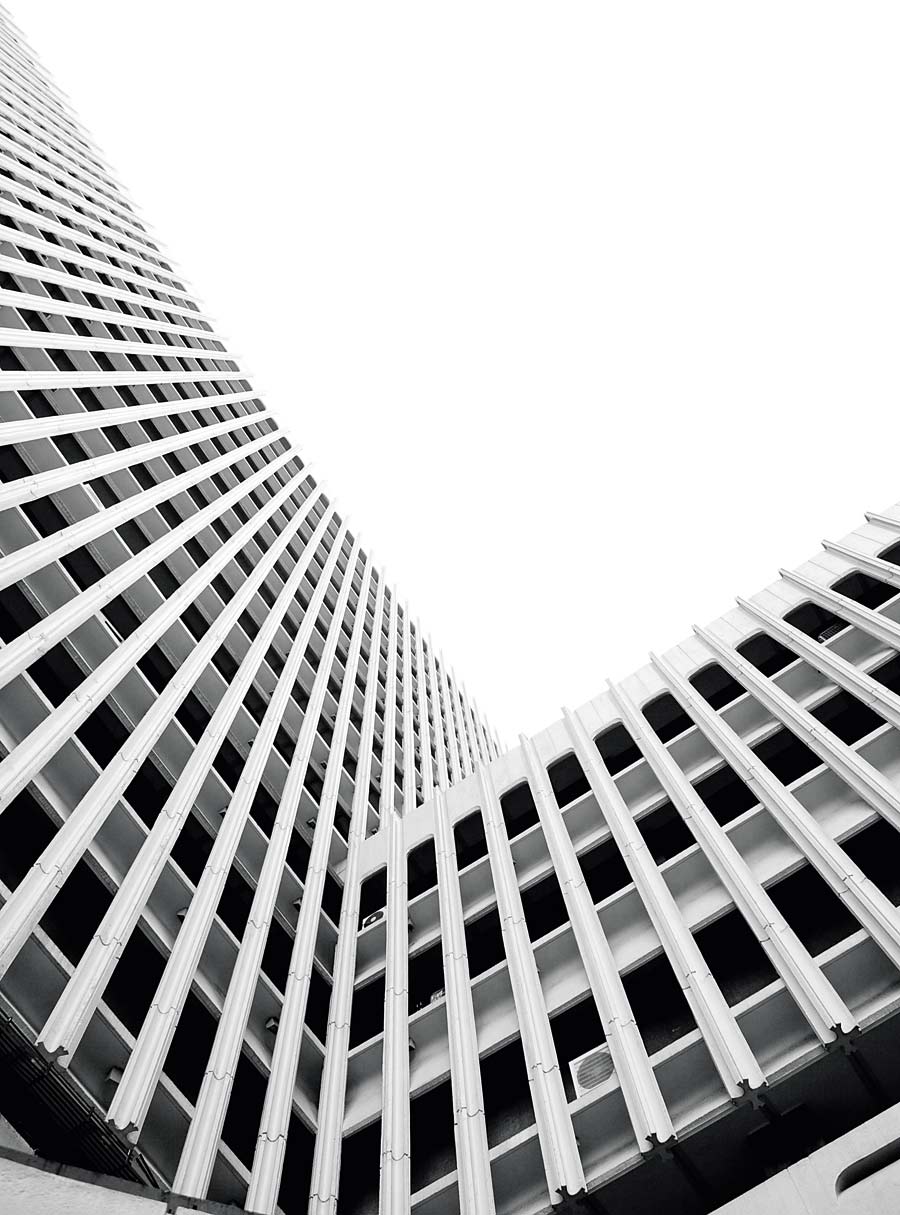
So little by little, construction became a favorite industry because it was easy to get into, because with a little money, you could start subcontracting. Later on, the jobs became capital-intensive because of the sinking peso. But we were able to deal with it, and we are proud of it. I am especially proud of DBP.
Consunji on Alfredo Luz
He was an architect who did well abroad, but here [in the Philippines] was stumbling and stumbling. To me, he brought in some things that helped change the construction industry. Number one: time of completion.
Both of us agreed very strongly on promptness of completion. As a matter of fact, most of the jobs I won were because of our speed of completion, [like] the project in Los Baños, IRRI [the International Rice Research Institute]. So much so, when I was doing one of his buildings, I felt this sense of yabang (pride) that I prepared the S-curve.
[The S-curve is used to plot complex processes, exhibiting a progression from small beginnings, accelerating and approaching a climax over a given period of time.] I said: this is the schedule. Here we are. Happily, I was always on top of schedule.
Consunji on Jose Zaragoza
My job with him was the Soriano San Miguel building on Ayala. [He was] easy to talk to. I have a story about this guy. Don Andres Soriano [our client] always saw me wearing white shirts and khaki pants. Here he comes, in a coat and tie— we were going to sign the contract for the building. We were outside the room of Don Andres, and the door that leads to the hallway was open. We saw the old man, and the old man saw us. What did Joseling do? He started taking off his jacket, and was making me wear it! [Laughs]
And of course the old man [Don Andres] was giggling, shaking with laughter, and enjoying the scene. When we finally came in, the old man told me to sit beside him, on his right. He said, “I am going to sign only two contracts, one for him and one for me.” We signed. That was the shortest contract signing I ever had! [Laughs] And there was Joseling, still a bit embarrassed that he had tried to insist that I wear formal attire.
Consunji on precedent
As always, the old architects had a purity of expression. The new architect’s work is easier because of the work of architects who have gone before him. So what is done today is easier because it was done before. There are better ways of presenting it, no question about it. And for us who build, it becomes easier because we have built it before. ![]()
This article first appeared in BluPrint Special Issue 3 2012. Edits were made for BluPrint online.


